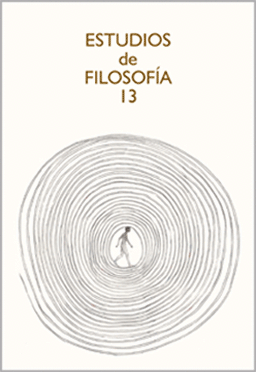Augmented Spatial Mediators of Late 20th Century and their Impact on the Realization Process of the Smooth Space in Architectural Discourse: Fresh Water Expo Pavilion Case
DOI:
https://doi.org/10.18800/estudiosdefilosofia.201501.008Palabras clave:
Space as a Becoming, Deleuze, Augmented Space, Fresh Water Pavilion, NOX ArchitectureResumen
With the rising influence of digitalization and its immense penetration intoeven everyday life, the last decade of the 20th Century addressed to a critical threshold in the successive transformation process of the spatiality in its long-term run. The advanced digital technologies of ubiquitous computing and generative design, as well as the invention of smart materials in late 90’s (particularly the nano-technological materials that emerged as the programmable matters with their ability to evolve continously) have all provoked the fluid characteristics of spatiality, and strengthen the transformative capacities of the architectural space through the emergence of computer-augmented territories. Additionally, while they are becoming as the body extensions, the advent of novel apparatuses and gadgets further enhanced the inte- gration of the corporal and incorporal bodies with the spatio-temporal multiplicities, where the hyperdimensionality of the space has been triggered to its outmost range, in relation to the “soft and smart technologically augmented immanent millieu”, in Spuybroek terms. Thus, like Spuybroek points out as the “haptonomist” presence of the body merges itself with these diverse bodily extensions on one hand; and on the other hand, as the rising influence of nomadic view of the world further stimulates the unboundedness and endless fluidity of space, so that the spatiality becomes a landscape of successive transformations, a topology of emergence or a plane of becoming, which is merely defined by lines of forces, and occures as an alive territory rather than a limited space of predefined boarders. Therefore, this evolvable territory which is affectable and being affected by the lines of forces –inner and outer forces–, emerges as an animated existence, an interactive organism. So, by interacting with the Deleuzian Philosophy and their notions like lines of forces, folding, becoming, smooth space, territory, spatium, this article aims to reveal the relevance of these notions in architectural discourse, as well as the emergence of the smooth space in the contemporary architectural practice, by magnifiying one of the very initial examples of its kind; in terms of unfolding the Fresh Water Pavilion of NOX Architecture by Lars Spuybroek into question to reveal the essences of thecontemporary transformable-evolvable architectural spatiality.Descargas
Los datos de descargas todavía no están disponibles.
Descargas
Publicado
2015-12-01
Cómo citar
Görgül, E. (2015). Augmented Spatial Mediators of Late 20th Century and their Impact on the Realization Process of the Smooth Space in Architectural Discourse: Fresh Water Expo Pavilion Case. Estudios De Filosofía, (13), 155–172. https://doi.org/10.18800/estudiosdefilosofia.201501.008
Número
Sección
Dossier Deleuze
Licencia
Derechos de autor 2016 Estudios de Filosofía

Esta obra está bajo una licencia internacional Creative Commons Atribución 4.0.






